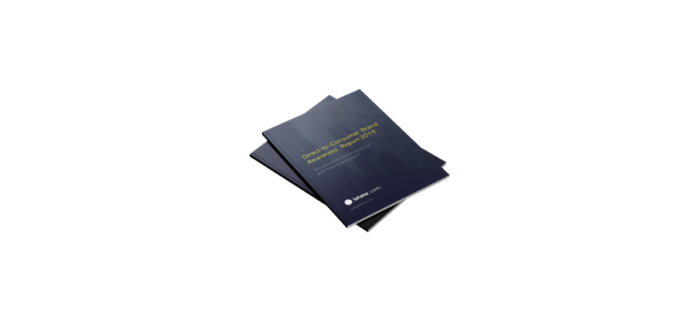
By failing to understand awareness of their brand across different audience groups, Direct to Consumer (D2C) companies in the food and drink sector could be missing out on important opportunities to grow and differentiate themselves. That’s according to new analysis from Latana, a specialist in advanced brand tracking. Using Latana’s proprietary brand analytics technology, the Direct-to-Consumer Brand Awareness Report 2019 measures how 62 leading D2C brands, including 12 in food and drink, are performing in terms of brand awareness in the United States.
While social media is the top acquisition channel for D2C companies, and food and drink is the third most popular interest on Instagram, Latana found that Instagram isn’t the most effective brand-building channel for D2C brands in this sector. In its analysis of frequent Instagram users who care about brand, food and drink companies saw little brand awareness difference between this audience and general consumers. Meal kit delivery service Home Chef and wine subscription service Winc Wines each enjoyed a respectable five percent brand awareness boost, but three other industry sectors performed significantly better. Apparel brands took the lead, with Home brands in second place, and Cosmetics and Hygiene companies at number three.
Food and drink brands also failed to make a significant mark on the increasingly important environmentally-conscious customer group. This is despite the efforts of some, such as Freshly, to reduce their environmental impact through recyclable or biodegradable packaging, or Graze’s use of 100% renewable energy. Home Chef saw the biggest increase in brand awareness between this group and general consumers at 3 percent but, again, apparel brands were the top performers, led by activewear retailer Fabletics. Its brand awareness was 11 percent higher than with general consumers, more than any other brand, possibly due to its founder’s ‘eco-friendly’ clothing line rather than its own sustainability-focused marketing.
One audience, however, did emerge as an effective target group for D2C brands in food and drink – early adopters. When Latana tracked early adopters in the US’ three top cities (New York, Chicago and Los Angeles), more than half of the food and drink companies analysed saw an increase in brand awareness. Notably, alcohol e-commerce platform Drizly and meal kit service Marley Spoon both doubled their brand awareness when comparing this audience with the general population.
Commenting on the report findings, Rytis Jakubauskas, General Manager at Latana, says, “More than two thirds of marketers make decisions based on their instincts. However, Latana’s analysis shows that our assumptions about different audiences aren’t always right. We might expect frequent Instagram users to be the most familiar with food and drink brands – or even eco-conscious consumers given the efforts many are making to reduce their environmental footprint, but this wasn’t what we found.
“As D2C brands focus on building their brands in order to grow, they can gain an edge by understanding the extent to which their brand is recognized by different audience groups. Perhaps they are winning in unexpected areas, which could open up new opportunities for marketing and growth. Or it could be that the audience they are targeting isn’t as brand aware as they hoped – which could signal the need for a new or modified marketing push. The right data tells marketers what they need to know, helping them make the right decisions for their business and its future success.”
About the methodology for Latana’s Direct-to-Consumer Brand Awareness Report 2019
The Direct-to-Consumer Brand Awareness Report 2019 is based on a sample of n=1,600 online-connected respondents, which Latana collected in the United States over 4 days. Latana used a method called MRP (multilevel regression and poststratification) to post-process the raw survey data – a method frequently used in quantitative political science to adjust for sample bias and to yield stable small area estimates.
Latana routinely uses MRP due to its ability to uncover insights in niche audiences even when sample sizes are small, overcoming the limits of brand tracking tools that use traditional survey research techniques.
MRP consists of two steps: the modelling step where a hierarchical Bayesian model was used with levels on country, and a poststratification step where we used census data from UN Stat to yield accurate population estimates. The Bayesian confidence bounds are in the range of +-2-4%, depending on the question. Read more about MRP for advanced brand tracking here.
To download a copy of the report, visit the Latana website: https://www.latana.com/d2c-
To request copies of the charts featured in Latana’s report or to speak to a Latana expert, contact:
Janine Maxwell
[email protected]
Tel: +44 (0) 208 979 2974
####
About Latana
Latana helps consumer businesses improve their marketing with cutting-edge brand tracking technology. Using advanced data science, Latana is able to overcome the limitations of traditional brand tracking tools to provide its global clients with accurate, actionable insights based on the opinions of up to 2 billion consumers. Founded in 2018, the company is part of Dalia Research, based in Berlin, Germany. For additional information, visit our website – www.latana.com







